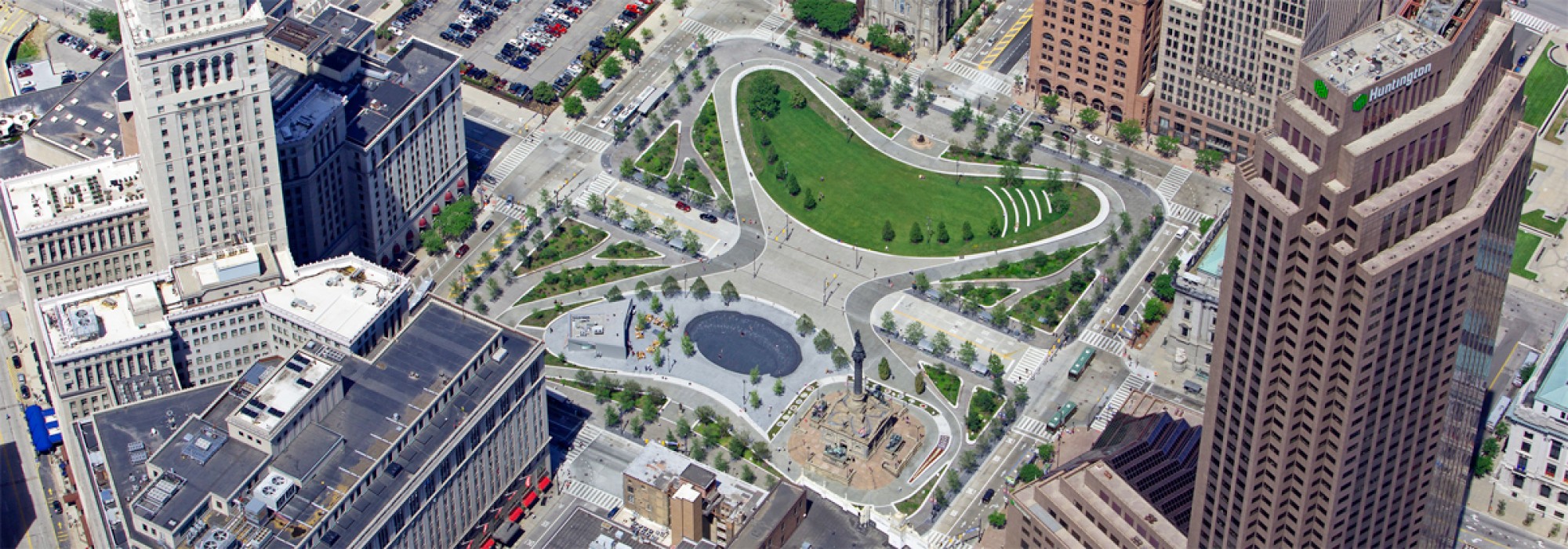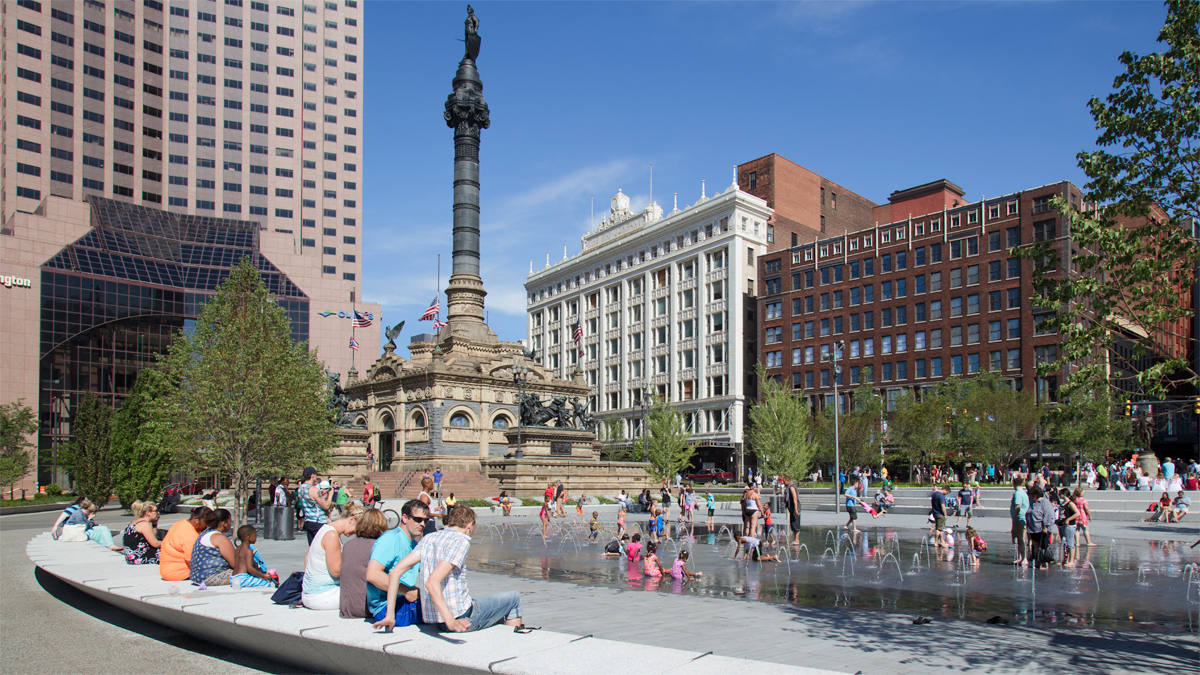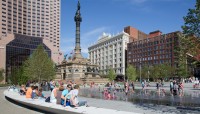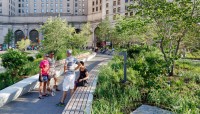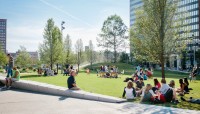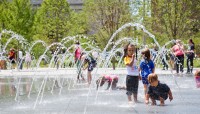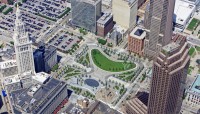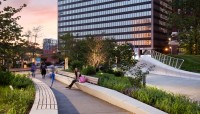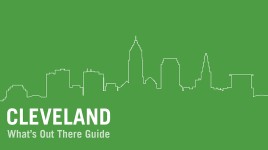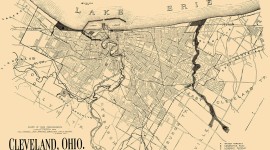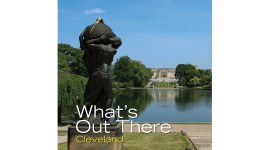Landscape Information
Laid out in the city’s 1796 plan, this six-and-a-half-acre square lies less than a mile south of Lake Erie. It was intended to resemble a New England common, serving as the city’s geographic, symbolic, and civic core. The square is subdivided into four distinct quadrants by Superior Avenue and Ontario Street.
As the city developed through the nineteenth century, competing demands for a transit hub, park, and commemoration led to the site’s scattershot development. Numerous features were introduced and removed over time. A perimeter fence enclosed the site in the mid nineteenth century, but it eventually became a hub for stagecoaches, and later streetcars, buses, and cars. By the late nineteenth century, the northeast quadrant was modestly designed with pedestrian paths, benches, and trees, while other quadrants accommodated statues in park-like settings.
In 1903, the Group Plan developed northeast, yet the square continued to evolve incongruously. Unifying plans were proposed in the 1970s by Lawrence Halprin and in the 1980s by Ken Bassett of Sasaki Associates, but the city instead continued a piecemeal approach, introducing park amenities such as water features and paved plazas that no longer survive in each quadrant.
Alongside efforts to revitalize Cleveland’s downtown, the square was redesigned by James Corner Field Operations with LAND Studio in 2016 as a cohesive, walkable space. Superior Avenue was narrowed and limited to bus traffic, while Ontario Street was closed and subsumed by the square. The perimeter is framed by an apron of grey brick pavers, rows of elm trees and raised planting beds of flowering trees and perennials. A walkway traces a butterfly-shaped loop around complementary forms that define the northern and southern halves. The northern is carpeted with lawn and curves around a monument to former mayor Tom Johnson (1915, relocated 2016), with curvilinear terraced mounds edged with stone. The southern, paved area accommodates a splash pad, a statue honoring Moses Cleveland (1888, relocated 2016) and the monumental “Soldiers and Sailors Monument” (1894). The square was listed in the National Register of Historic Places in 1975.



